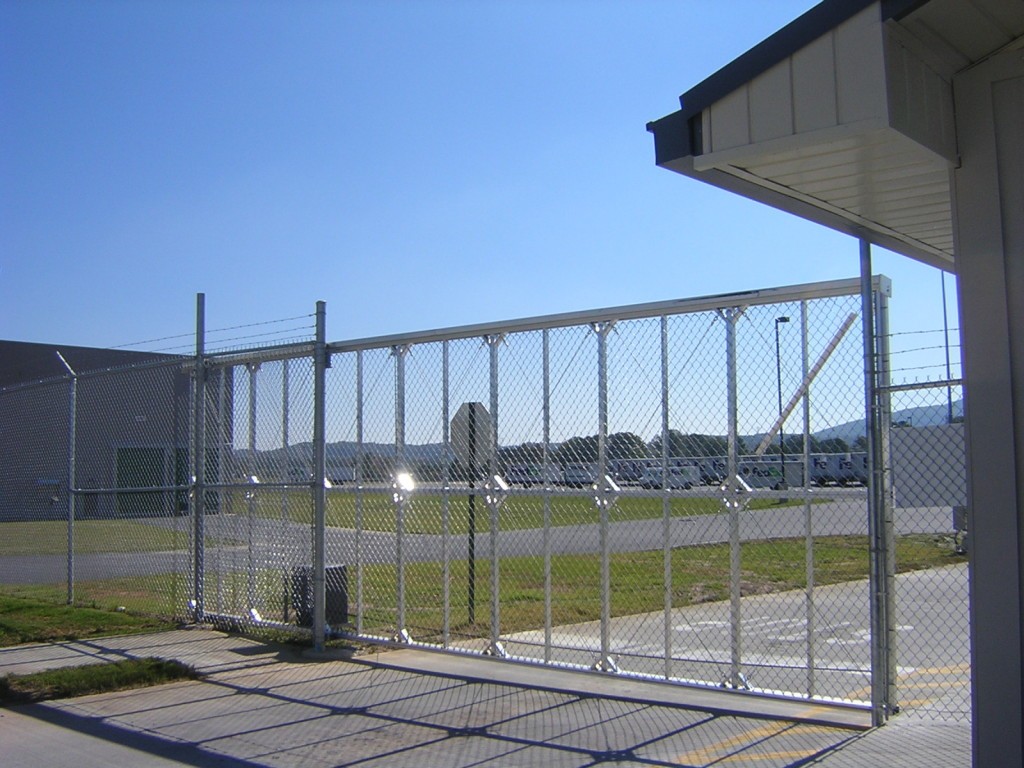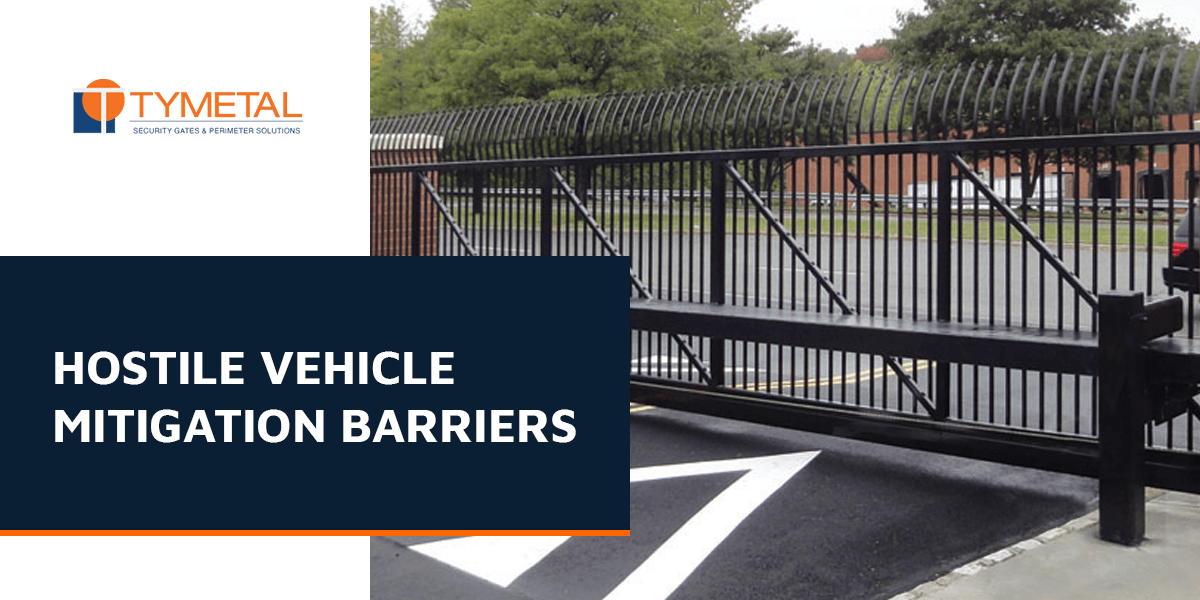
Hostile Vehicle Mitigation Barriers
Imagine a scenario where an intruder tries to drive onto your property without stopping at fences, gates, or pedestrians. How far would they get? With the right security measures in place, you can stop them in their tracks, protecting both people and property. In this guide, we’ll explore effective strategies to defend against vehicle attacks.
Table of Contents:
What Is a Vehicle as a Weapon Attack? | How to Prevent Vehicle Attacks | What Are Hostile Vehicle Mitigation Barriers? | How Are Vehicle Security Barriers Tested? | Types of Vehicle Mitigation Barriers | HVM Applications |Choose TYMETAL For Your Next HVM Product
What Is a Vehicle as a Weapon Attack?
Vehicle crashes are unfortunately common and often lead to devastating outcomes. In 2020 alone, there were over 42,000 fatal vehicle crashes in the U.S.—that’s more than 115 per day on average. Most of these are accidents, but some are intentional. Over the past decade, there has been a rise in what is known as a vehicle as a weapon (VAW) attack, where individuals use vehicles to harm others, either randomly or as part of a targeted act of violence.
According to the Office of the Director of National Intelligence (ODNI), the most common type of vehicle-borne attack in the U.S. is a vehicle-ramming attack. These occur when a person intentionally drives a vehicle into another vehicle, building, or group of people to cause damage or injury.
A notable example was the 2016 attack in Nice, France, where a driver plowed into a crowd, killing 86 people. While not all VAW attacks are this severe, they often result in injuries and property damage. Some attacks target buildings, aiming to disrupt operations or cause vandalism.
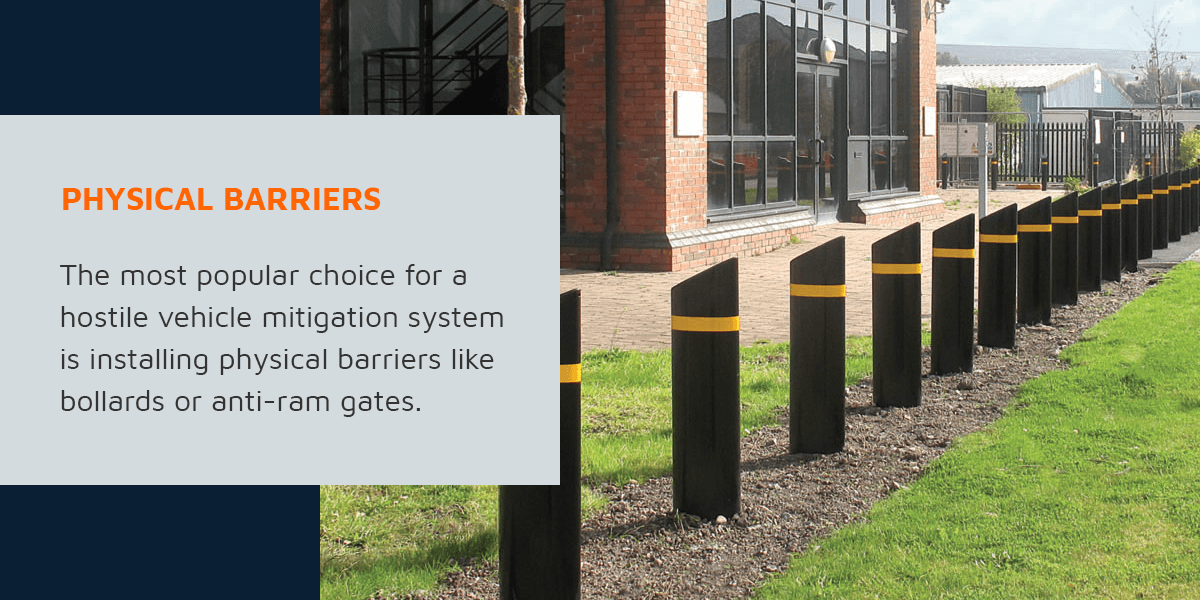
How to Prevent Vehicle Attacks
Architects, engineers, and facility managers should be aware of the risk of VAW attacks and take steps to protect people and structures. This involves implementing hostile vehicle mitigation (HVM) strategies. There are two main approaches to reduce the risk of such attacks:
- Campus design: Designing roads to prevent vehicles from gaining speed near pedestrian areas can help. Curved access roads or sharp turns before entry points can slow down potential attackers. This is especially useful for new developments.
- Physical barriers: Installing barriers like bollards, crash fences, and anti-ram gates is one of the most effective ways to block vehicles. These can be used in both new and existing facilities.
While these measures may not stop a determined attacker, they can significantly delay or prevent them from carrying out their plan.
What Are Hostile Vehicle Mitigation Barriers?
Physical barriers are essential in protecting pedestrians and buildings from VAW attacks. These are known as hostile vehicle mitigation (HVM) barriers. A typical SUV weighs around 5,000 pounds, and its impact force increases with speed. To ensure safety, barriers must be strong enough to withstand such impacts.
You may have seen HVM barriers in places like college campuses, government buildings, and public spaces. They often appear as decorative bollards or anti-ram gates. These barriers are designed to blend in while providing critical protection.
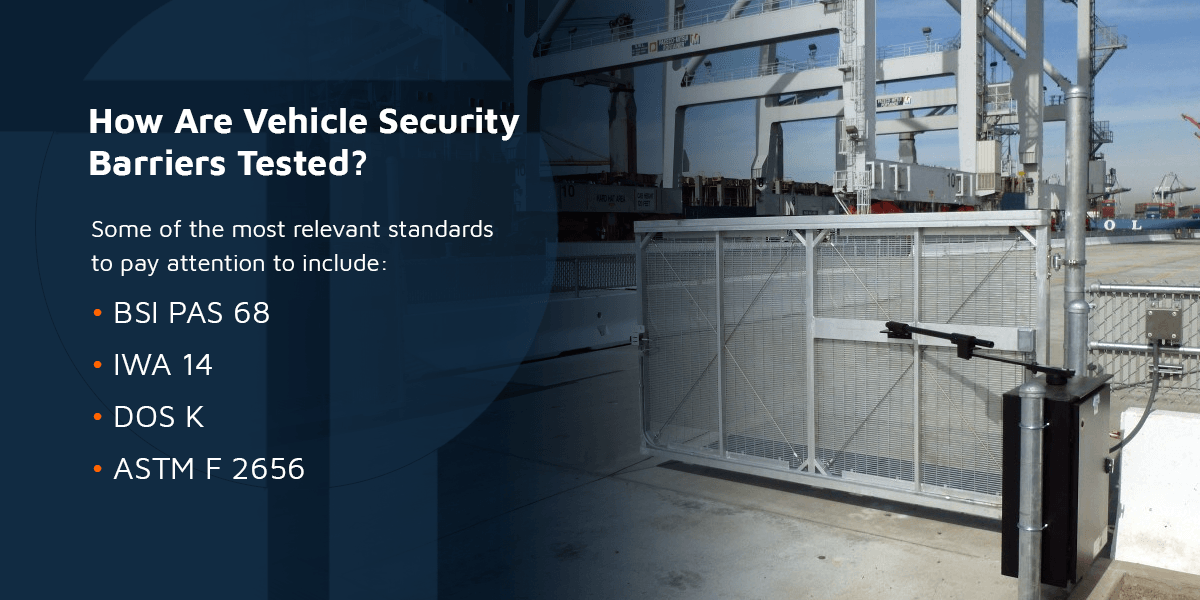
How Are Vehicle Security Barriers Tested?
HVM barriers undergo crash testing to ensure they meet specific standards. Key criteria include:
- US DOS/DOD K: These ratings indicate the barrier's ability to stop a vehicle of a certain weight traveling at specific speeds.
- ASTM F 2656: This standard provides detailed information about how well a barrier can resist penetration.
- BSI PAS 68: Commonly used in the UK, it outlines the performance requirements for HVM barriers.
- IWA 14: A global standard that specifies the essential impact performance of vehicle security barriers.
Understanding these ratings helps in choosing the right barrier for your needs.
Types of Vehicle Mitigation Barriers
Vehicle mitigation barriers come in different forms, falling into two categories:
- Active barriers:Â These deploy and retract as needed, ideal for access control. Examples include drop-arm crash beams that block access until authorized entry is granted.
- Passive barriers: These remain in place permanently, guarding areas where vehicles should never enter. Examples include walls, fences, and bollards.
Most properties benefit from a combination of active and passive barriers. Let's look at some common options for HVM security:
1. Crash-Rated Planters
Standard landscape features often lack the strength needed for high-security environments. Instead, consider crash-rated planters that look like regular garden features but offer robust protection. The Universal Slimline Planter 40 from TYMETAL can stop a 7.5-ton vehicle traveling at 40 mph.
2. Crash Beams
Drop-arm crash beams are ideal for access points. These beams are made from durable materials like aluminum and steel and are anchored in concrete. TYMETAL offers crash beams rated to handle collisions from vehicles traveling up to 50 mph.
Options include manual, hydraulic, and electro-mechanical operation. Visit our website to view our range of crash beams.
3. Bollards
Bollards are cylindrical posts that allow pedestrian access while blocking vehicles. They come in removable and fixed versions. TYMETAL's bollards are designed to flex slightly upon impact, absorbing much of the energy. Our strongest model can stop a 16,534 lb vehicle at 50 mph.
Some bollards are decorative, while others are more functional with bright stripes. Explore our selection of crash bollards today.
4. Fences
Crash-rated fences are designed to stop vehicles, not just people. They are often used in conjunction with traditional perimeter fencing. TYMETAL's crash fences can stop a vehicle weighing up to 15,000 lbs at 50 mph.
These fences consist of posts connected by cables, which absorb and deflect the impact of a vehicle. View our crash fences now.
5. Gates
Anti-ram gates are essential for controlling access points. TYMETAL offers various types, including cantilever slide gates, overhead slide gates, and swing gates. These can be automated or manually operated.
Equipping your facility with a crash-rated gate is crucial, as attackers often target access points. Discover our range of crash gates today.
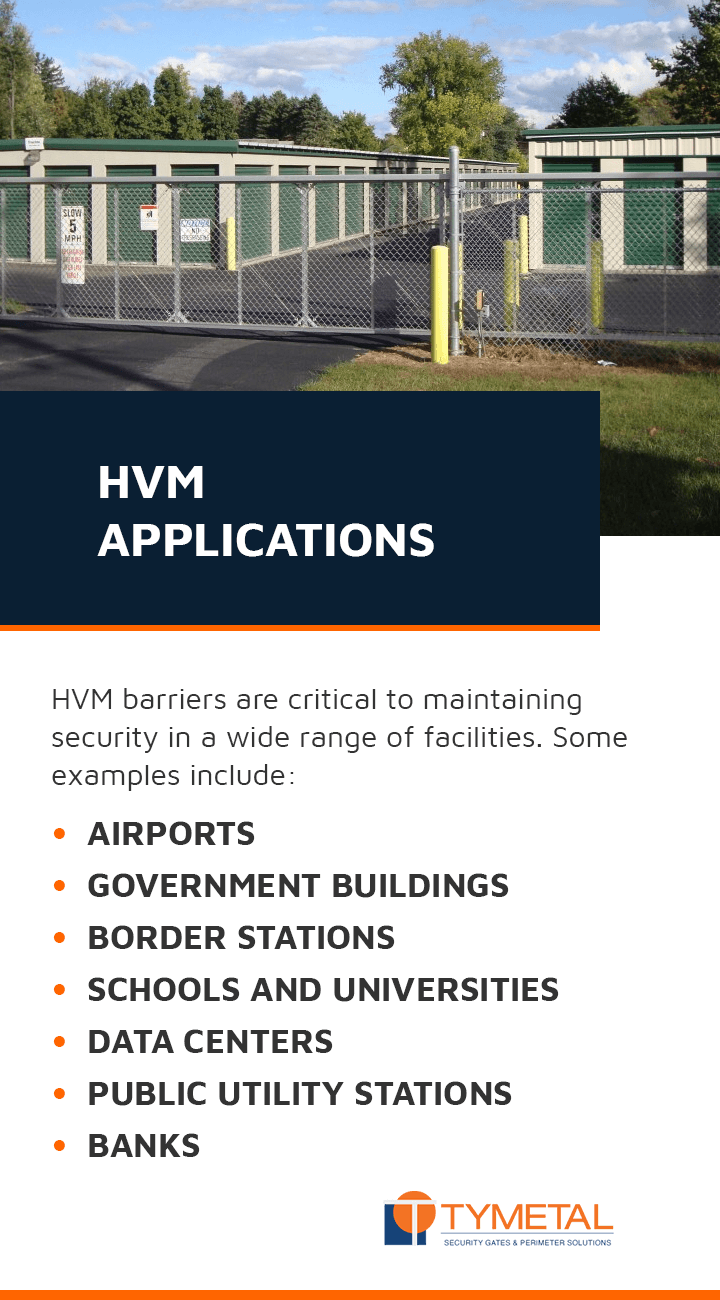
HVM Applications
HVM barriers are used in a wide range of facilities, including airports, government buildings, schools, data centers, and public parks. Any location seeking to enhance counter-terrorism measures can benefit from these barriers.
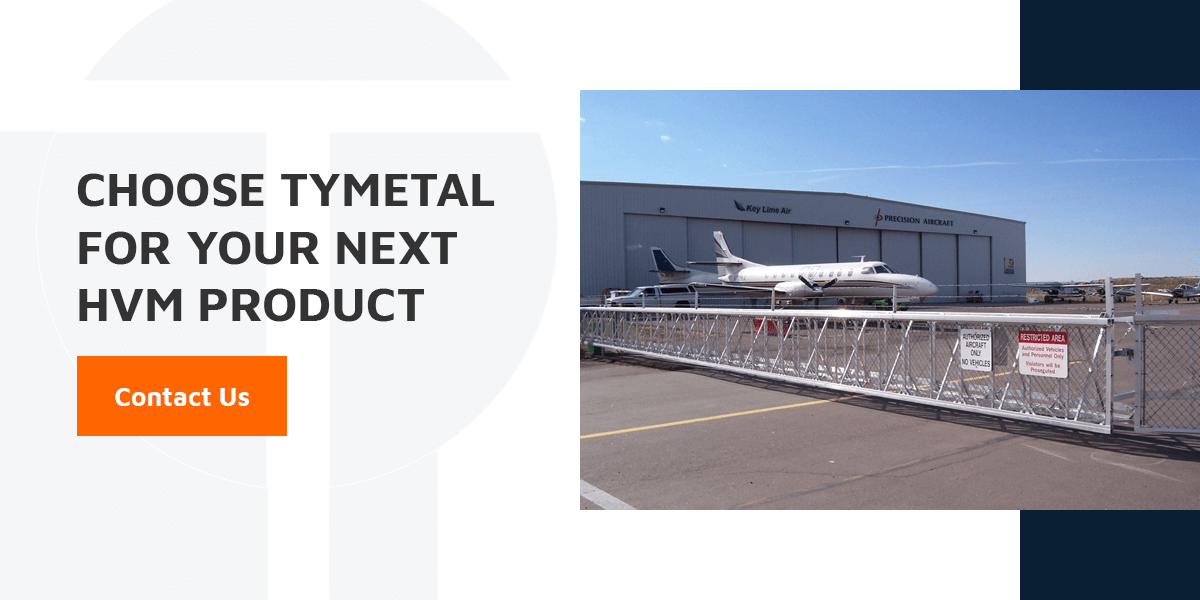
Choose TYMETAL for Your Next HVM Product
If you're looking to improve your property's security against hostile vehicle attacks, partner with TYMETAL. With decades of experience and a commitment to innovation, we provide top-quality HVM solutions. Contact us today to learn how we can help secure your facility. Fill out our online form or call us at 888-978-GATE (4283).
Metal spinning product are made by stainless steel ,the materical including 201ss,30433,316ss and so on .Now we have a lot of product like ice bucket ,bowl and lampshade.
Stainless steel processing,Cnc Machine Parts,Stainless Steel Table Base,Bbq Stainless Steel Stove
Shaoxing Hui Da Metal Products Factory , https://www.syhdmetals.com

